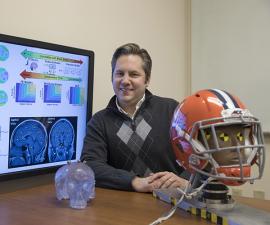Matthew B. Panzer

About
Dr. Panzer is the Associate Dean for Graduate Education and Post-Doctoral Affairs for the School of Engineering and Applied Sciences, a Professor of Mechanical & Aerospace Engineering and Biomedical Engineering at the University of Virginia, and the Deputy Director at the Center for Applied Biomechanics. He graduated from Duke University with a PhD in Biomedical Engineering, and from the University of Waterloo in Ontario Canada with this BS and MS in Mechanical Engineering. Dr. Panzer's research covers computational and experimental methods to study high-rate non-linear mechanics in the fields of tissue mechanics, impact biomechanics, vehicle crashworthiness, military blast and ballistics, and sports injury. Current applications of this research include the study of traumatic brain injury for blast, ballistic, and football helmet impacts, biological tissue testing and characterization, human body model development for automotive crashworthiness and blunt non-lethal weapons, and the development of injury mitigation systems such as helmets. Dr. Panzer has served as the Principal Investigator for more than 40 programs funded by various federal and industrial sponsors, and has authored more than 125 peer-reviewed journal and conference articles.
Education
B.S. University of Waterloo, 2003
M.S. University of Waterloo, 2006
Ph.D. Duke University, 2012
"Our research makes an impact on the development of new injury mitigation technologies through the study the biomechanics of impact in sports, automotive crashes, and the military."

